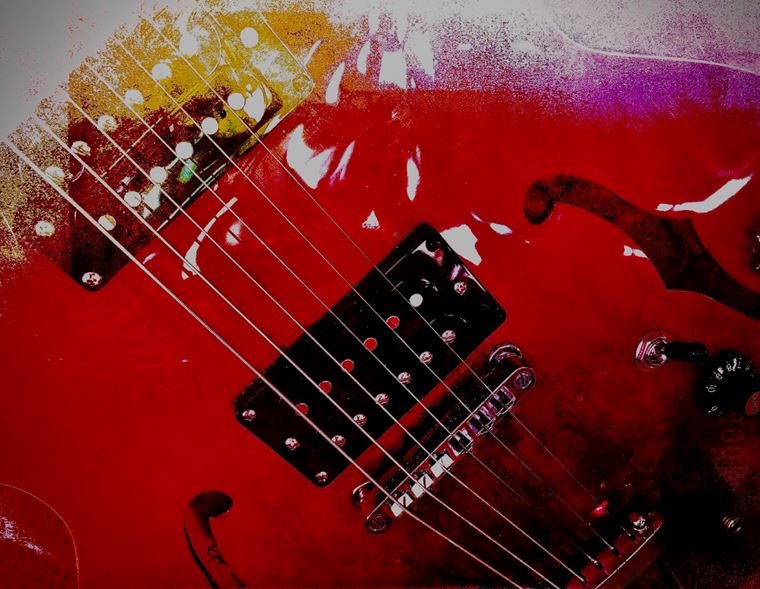The 12 Best Folk Artists of All Time
Published on 23 January 2023
What is folk music?
They say that folk is the music of the people. A folk song tells a story, narrates historical or cultural events. It can pass on deeply rooted customs, traditions or myths, and can also reflect on current political affairs. Folk songs resonate with the human psyche in a way that no other genre ever can. It is music for the people by the people. It is timeless but contemporary, traditional yet modern.
Every country in the world has its own version of a musical folklore, each with its own array of traditional instruments or vocal stylistics characteristic to a particular region or tribe.
The message encapsulated in folk music can be multidimensional and metaphorical or, on the contrary, rather raw and straightforward. What makes a good folk song is its ability to touch on the soul, how relatable it is and how catchy its melody. Some may be valued for their intricate arrangement and meticulously written instrumental parts that complement each other. Others will be passed down by generations due to their perpetual lyrical importance, with meaning as strong today as it was when they were first written, be it 50 or 100 years ago.
We set ourselves a challenging task - tricky in its form but rewarding in its results: to collect a hefty list of the best folk artists of all time! (Although it is near impossible to produce such a list without writing up an encyclopaedia and incorporating world music as it righteously deserves to be, we based our choices mainly on the guitar as a main instrument for each folk artist included).
Where do we even begin? The list of top folk artists who deserve a first mention is, truth be told, never-ending. That’s why what you’re about to read comes in no particular order, just a shuffle if you will.
Bob Dylan
Often regarded as one of the most acclaimed songwriters of all times, Bob Dylan is also one of the most popular. Touching on multiple genres, Mr. Dylan doesn’t shy away from either taboo or borderline-dangerous topics. The majority of his most celebrated work dates from the 1960s American folk revival era, with songs such as Blowing In The Wind or The Times They Are A-Changing becoming anthems for antiwar and the civil rights movements.
Six decades and counting, Dylan never ceased to push the boundaries and expand the imagination of popular music. It comes as no surprise that in 2016 Bob Dylan received the Nobel Prize in Literature for the creation of new poetic expressions within the great American song tradition.
Woody Guthrie
This machine kills fascists. It seriously does. If you think about the amount of minds that were influenced by the brave political stance of equality and human rights of Woody Guthrie's protest songs, the machine (the guitar, the voice) did some damage - for the good! However, Guthrie’s catalogue isn’t limited to just the one type of song: he was also very prolific in writing children’s songs, ballads and country tunes.
His legacy lives on, with This Land Is Your Land achieving anthemic status and respectively being recorded in dozens of versions in various countries. It is worth mentioning that Guthrie was involved in The Almanac Singers - the first folk supergroup active in the early 40s - alongside other famous folk artists such as Pete Seeger or Lee Hays. Each of the members continued onto successful solo careers within the genre.
Pete Seeger
As part of the aforementioned Almanac folk supergroup, Pete Seeger, much like his pal Guthrie, went on to achieve quite a status. Initially a member of a new folk formation, The Weavers, Seeger then became a standalone solo singer-songwriter. Pete would never part with his banjo and later added a 12-string guitar as his main accompaniment. He was renowned for having custom-made guitars with triangular soundholes and he used alternate tunings evolving around open or dropped D. He would use a combination of thumb and finger picks to pluck it with, just as he would on a banjo.
Seeger wrote a number of songs which were recorded over and over again by various other artists within the folk revival movement as well as outside the genre. His best known works are Where Have All The Flowers Gone, Turn! Turn! Turn! and Kisses Sweeter Than Wine (probably the most popular version we know today is the one performed by Jimmie Rodgers). Seeger remained active on the scene for many years past the folk revival. He was that prominent singer who never stopped being the vocal advocate of the peace movement, tirelessly standing in support of civil and workers’ rights.
Joni Mitchell
Ten Grammy Awards should be enough to give you an idea of how big an impact Joni Mitchell’s songwriting had on the musical landscape of our times. Then again we must also mention Joni was inducted to the Rock and Roll Hall of Fame in 1997. Mitchell’s poetic imagery mesmerised generations.
“We are stardust
We are golden
And we’ve got to get ourselves
Back to the garden.”
Whether we heard it live back in ‘69 or playing a record in our cosy modern homes in between another Netflix series, the impact of the lyrics remains as powerful as it was when Woodstock was first released.
Certainly one of the top folk artists, but could she be the most influential female recording artist of the 20th Century? We’ll leave it to you to decide while listening to Big Yellow Taxi!
Doc Watson
It is fair to say that modern entertainment music owes a lot to the work of the early Appalachian musicians. They were a key influence in the development of bluegrass, country, rock and roll as well as played a huge part in the folk music revival of the 60s. One exceptional musician of the Appalachian scene is Arthel Lane Watson aka Doc Watson.
Blind from a very young age, Doc developed an incredible sense of hearing which led him to crafting a unique blend of playing techniques. If he didn’t play his beloved Martin D-18, Doc would be plucking away on a banjo. His original way of combining flatpicking and fingerpicking styles on both instruments, matched with his authenticity as a mountain musician with a repertoire learned via the oral tradition, made him a highly renowned figure on the folk scene of the 60s. Watson’s distinctive and rich baritone voice make his ballads resonate within your soul like a gospel on a Sunday.
We could list the wealth of songs Watson composed and you’d surely say “I know this one!” at some point. Titles like Tennessee Stud, Shady Grove, Matty Groves, Little Omie Wise are a must for any guitarist to listen to. But a Grammy Lifetime Achievement Award should suffice to say if we were to tell you you’ve got to also learn from this man’s chops, right?
Neil Young
From a solo folk music artist to a grunge rocker, Neil Young’s discography is a sight to behold. If you haven’t heard the Harvest record (inducted into the Grammy Hall of Fame) you must have been truly hiding under a rock. Other important and critically acclaimed albums that have etched themselves into the landscape of famous folk releases are After the Gold Rush or Rust Never Sleeps. Young’s lyrics cover everything from metaphoric social narratives to vulnerable romantic poetry. His enchanting guitar playing won the hearts of worldwide audiences and critics alike. Inseparable from his Martin D-45, Neil often experimented with effects and heavier sounds when switching up to a Les Paul. In 1995 Young was inducted into the Rock and Roll Hall of Fame. The same year saw him record his 21st studio album, Mirror Ball, which featured members of grunge giants, Pearl Jam.
It’s worth mentioning that Neil was also a part-time member of Crosby, Stills, Nash & Young.
Due to his pioneering blend of hard rock guitars with folk, Young has become one of the most influential folk artists in the contemporary folk-rock genre.
David Crosby
The soaring vocal harmonies, the most entrancing of rhythms and alternate tunings strummed on a guitar (including the “Croz” tuning: EBDGAD), David Crosby was a living icon of his times.
In addition to his solo career, he was a founding member of both the Byrds and Crosby, Stills & Nash and Young. This earned him an induction into the Rock and Roll Hall of Fame for both bands.
Crosby never shied away from experimenting with music, which made him somewhat a precursor of many trends before they caught on. He transformed the idea of rock’n’roll by incorporating country and folk music. His guitar would chime or jangle and his intricate shapes, derived from early jazz (check out Déjà Vu to get an idea!), would start a trend of genre fusion amongst musicians. On top of that, together with the Byrds, Crosby released one of psychedelic rock’s greatest singles: Eight Miles High. Musically non-stop since 1964, David Crosby sadly passed away earlier in 2023 leaving a vein in the world of music that will be hard to fill.
Carter Family
It's hard to imagine where folk music would be today if there had never been the Carter Family. Their music helped inspire artists like Bob Dylan or Woody Guthrie (whose This Land is Your Land melody was taken from an old Carter Family tune). Johnny Cash grew up listening to them on the radio and learning their songs. For us guitarists, perhaps the most notable fact about the band is Maybelle Carter’s guitar playing. She developed a somewhat innovative technique known as the “Carter scratch”: she used her thumb along with two fingers. This method allowed her to play melody lines on the low strings whilst keeping the rhythm by brushing across the high strings.
Old time Americana, gospel, bluegrass and country entwined with rootsy folk, it’s fair to say Carter Family’s influence on contemporary music is beyond significant.
Johnny Cash
The man in black needs no introduction. Cash is one of the best-selling music artists of all time. Although many would categorise his songwriting into a country genre, upon a closer look, one simply cannot unsee the aura of folk this artist has incorporated into his compositions.
The main themes of Cash’s songwriting include storytelling, love, redemption, moral tribulation, sorrow and regret. He often performed traditional spiritual songs or gospel during performances with his wife, June Carter. Once you hear Johnny Cash, you’ll forever recognise his style: deep bass-baritone vocals against striking, train-like chugging guitars.
His temper and rebellious behaviour put Johnny into many nights spent in prison and granted him an Outlaw title. And what is now known as legendary prison concerts, with one particular documented on an iconic record, Johnny Cash at Folsom Prison (1968), brought him eternal fame. Who can't play Ring of Fire or I Walk The Line, right?
Lead Belly
Huddie William Ledbetter, better known as Lead Belly, was a prominent figure in the world of folk and blues, particularly renowned for his virtuosity on the 12-string guitar. He popularised a multitude of old time American folk songs such as Cotton Fields, Goodnight Irene or In the Pines (which you may know better by the name Where Did You Sleep Last Night as covered by Nirvana on their Unplugged album). Caught in between the 19th and 20th Centuries, Lead Belly experienced big socio-economic changes which he reflected in his songwriting. His topics include: cattle herding, cotton field work, racism, prison life as well as pleasures of man: liquor and women. He never steered from difficult or controversial topics and often wrote about high political figures. In 1918 Huddie murdered a man in a fight and got sent to prison. He worked on a cotton field and lining the railroad tracks. As the life of a folksinger goes, with all the ups and downs and a knack for a catchy verse, Leadbelly managed to get himself out of jail with nothing but a song! He directed the lyrics at the Texas Governor asking for a pardon and got released in response.
Lead Belly never lived to see the day his songwriting became famous. After his death, a folk quartet The Weavers covered Goodnight Irene which sold million copies and landed a solid #1 on the charts.
He was posthumously inducted into the Rock and Roll Hall of Fame, in the year 1988.
Bert Jansch
Whilst America was bursting at the seams with a new wave of folk artists, Britain had its own response to the phenomenon. One of the leading figures of the 60s British folk revival was a Scottish guitarist and singer, Bert Jansch. His self-titled debut album (recorded on borrowed guitars!) caused a national euphoria for its groundbreaking guitar playing style combined with captivating songs with classic themes. Bert created a unique fusion of blues and jazz and incorporated it into a folk song. In 1968 he founded a band Pentangle with which he toured and recorded until early 70s. Jansch was a keen collaborator and performed alongside other prominent folk artists of his time such as John Renbourn or Anne Briggs. He was active musically from early 60s until his death in 2011.
Bert’s playing influenced a whole palette of artists from all walks of life and genres. Amongst them are the likes of Jimmy Page, Donovan, Paul Simon, Nick Drake or Neil Young. Jansch received 2 Lifetime Achievement Awards at the BBC Folk Awards in 2001 and in 2007.
Simon & Garfunkel
The title of one of the best-selling artists of our times, with over 100 million records sold worldwide, goes to the American folk rock duo known as Simon & Garfunkel.
There was just something special about the way those two worked together and it certainly echoed in their songs. Paul (Simon) was the main songwriter and guitarist whilst Art sang lead vocals. He sang so well that The Rolling Stone magazine ranked him 86th position on the list of the 100 Greatest Singers of All Time. Their biggest hit to date is called The Sound of Silence and has one of the most enthralling opening lines ever written:
“Hello darkness, my old friend
I've come to talk with you again.
Because a vision softly creeping
Left its seeds while I was sleeping.
And the vision that was planted in my brain
Still remains
Within the sound of silence.”
Final Thoughts
The time has come to end our blog and yet we feel oddly dissatisfied - we want more. The list of top folk artists of all time goes beyond a 2 digit number, if you ask us. Truth be told, we could be writing about it all day. For those of you who were lucky enough to live through the times when folk music was everything, hopefully this brings back sweet memories. And those of us who were born a few decades past their peak, the best thing we can do is spin some of our favourite folk records and cherish their timeless legacy sonically. Until the next folk revolution.












